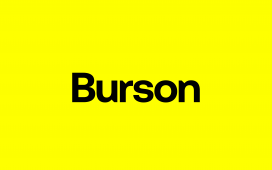
This year, we have some of the biggest sporting events in the global calendar taking place – and we have been gearing up for a summer of sports.
The UEFA Euros 2024 are just around the corner, with games kicking off on 14 June. The GCC has always been passionate about football, but with the increased investment from Saudi Arabia in everything from Newcastle United FC to the FIFA World Cup 2034, it could be argued that football has never mattered more in the region.
If that wasn’t enough, the four-year-major sporting event cycle also brings us the Paris Olympic Games and Paralympic Games. Prepare to see brand activations springing up on product promotions, digital and social ads and a whole lot more.
Full disclosure, Coca-Cola is an official global partner of all these events, so some of that branding will definitely be ours – including a KSA promo with a chance to watch the Euros live in Germany
With these major sporting competitions – and more – driving a steep uptick in sports marketing, I see two major trends informing brands’ strategies and approaches – the first, localisation and the second, inclusivity.

Both of these trends are also informed heavily by technology – which now make it easier than ever to reach people and allow them to participate, and that also drives engagement like never before.
From geo targeting, to using AI to create content, to leveraging the digitally led consumer journey, technology now enables us to reach a specific consumer for a specific game, either in advance, during or post that game – meaning we can capture their attention at the right moment, in the right context.
Shorter sports
Today, when it comes to sports, fandom is rapidly changing in favour of shorter, more consumable content. In cricket for example, T20 is overtaking the 50-overs match.
It seems Gen Z does not have the patience to watch full games – but they’re consuming sports content outside of the matches and they are consuming content all of the time. Brands needs to understand that the relationship of people with sports is evolving, and we need to rapidly evolve the way we create experiences as marketers.
Think local
For global brands in particular, it’s never been more critical to think local. That means understanding your audiences, listening to their passions, and aligning with their interests.
Which is why we’re currently running a major campaign to win tickets to either the final or the India-Pakistan match of the ICC Men’s T20 World Cup on June 9th. In fact, our on-pack campaign ensures that everyone who buys a Coke and enters our promo is a winner.
This leads me to the other major trend I mentioned – which is inclusion. It’s about understanding that passion for sports is not limited to your used-to-be-typical male consumer, and that sports stars themselves are no longer one-size-fits-all.
Not only do we see more and more women following a wide variety of sports, there’s also more interest in women’s teams, players and athletes.
Nowhere was this more obvious than in the FIFA Women’s World Cup last year, with stadiums packed with young female fans, who were also determined to get their hands on replica kits.

But women’s sports aren’t simply for women, they are now officially big business. Deloitte forecasts that this year, women’s elite sports will generate more than $1 billion in revenue — a whopping 300 per cent increase on 2021.
Inclusivity also means that opportunities in sports marketing go far beyond the traditional big five of cricket, football, tennis, golf and basketball.
With every edition of the Olympic Games, not only do we see more sports added – but we also see new sporting heroes win hearts around the world – think of Syrian refugee swimmers Sarah and Yusra Mardini, or Eric ‘The Eel’ Moussambani from Equatorial Guinea.
So, for these major events this summer, and indeed across sport marketing for FMCG brands, we’re focusing on two things – connecting with consumers emotionally through shared love for the sport, and finding opportunities for the use of our products in the sports ritual – in our case, that’s for consumption while watching.
That might be in a stadium, or it could be at home gathered around a TV, or in a café with friends and fellow fans.
Because these events are responsible for moments that we remember for a lifetime – and associating our brands with these memories forges intangible bonds.
By Tarun Sabhlok is a Senior Marketing Director for the Middle East at The Coca-Cola Company









